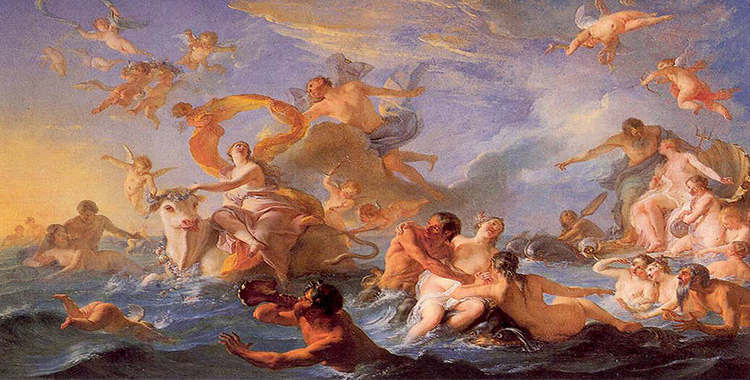If I ask you the question, “when was the idea of a European unity first mentioned?”, some of you might be vague and answer “sometime in the aftermath of the Second World War”. Others, a bit more precise, will say “in 1950, when French Foreign Minister Robert Schuman proposed to create a new form of organisation of States in Europe.”
But the idea of a European unity is actually much older.
In fact, the term “Europe” was first used in the writings of Hesiode (VII century before JC) and of Herodote (V century before JC): in the Greek mythology, Europe is a princess kidnapped by Zeus, who took the form of a white and gentle bull to seduce her.
But the term “Europe” did not take on a cultural or political meaning at that point. It is only from the Middle-Ages that the idea of a European unity appeared, as Christianity was seen as a potential unifying element.
Creating a European Union was indeed first seen as a means to maintain peace against a common external enemy. For example, in 1458, George of Podebrady, King of Bohemia, called all European Christian powers to unite against the Turks.
From the Renaissance to the Enlightenment, the many internal fights led politicians, writers or philosophers to think of the creation of common European institutions to guarantee peace on the continent. The British Quaker William Penn in the XVIIth century and the French philosopher Saint-Simon in the XVIIIth century both developed the idea of a European Parliament.
In the XIXth century, the Italian politician Mazzini and the French poet Victor Hugo both dreamt of a federation of European republics: “A day will come when all nations on our continent will form a European brotherhood… A day will come when we shall see… the United States of America and the United States of Europe face to face, reaching out for each other across the seas.”, said Hugo during a speech at the International Peace Congress held in Paris in 1849.
With them started a new era for the idea of a European unity, based on the willingness to bind citizens rather than princes or states. They wanted to create a sense of belonging between people who shared a common cultural heritage.
After the first and the second World War, however, the idea of a European Union was no longer the dream of utopians, poets or philosophers. It became a necessity for the whole society.
All that remained was thus to build a political and institutional framework. The foundation stones were laid by the “European Fathers” such as Aristide Briand, Altiero Spinelli or Jean Monnet, to cite but a few.
And it didn’t take long until bureaucratic Europe replaced citizens’ Europe. The continuous decrease in the participation rates to the European elections testifies to the current widespread indifference to Europe (see our article “Did Europeans forget about Europe?“)
Let’s hope that the upcoming elections will act as a wake-up call to revive the belief in a unified and peaceful Europe, which so many have dreamt of before.
We created a timeline for you. Have a look! And don’t forget to CLICK ON THE SMALL PICTURES to read the text associated with each caption.

Leave a Reply